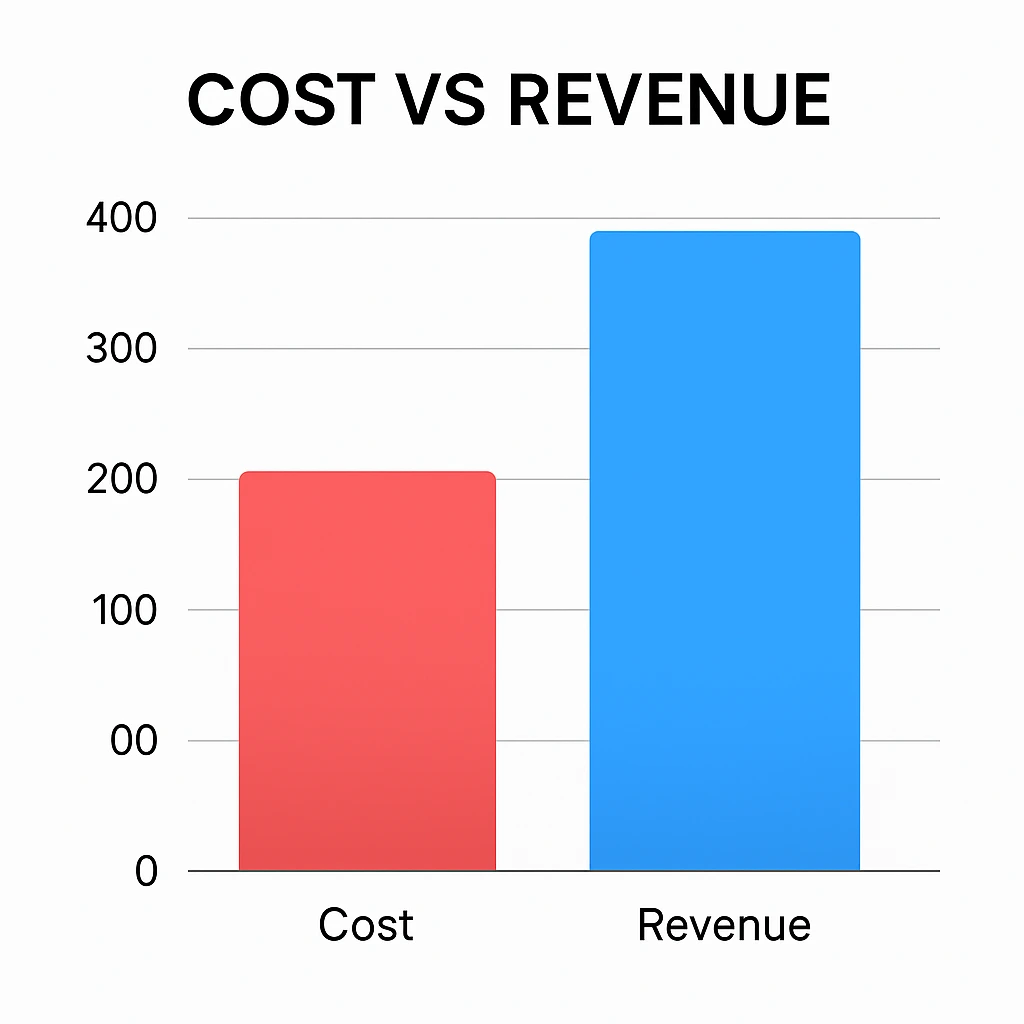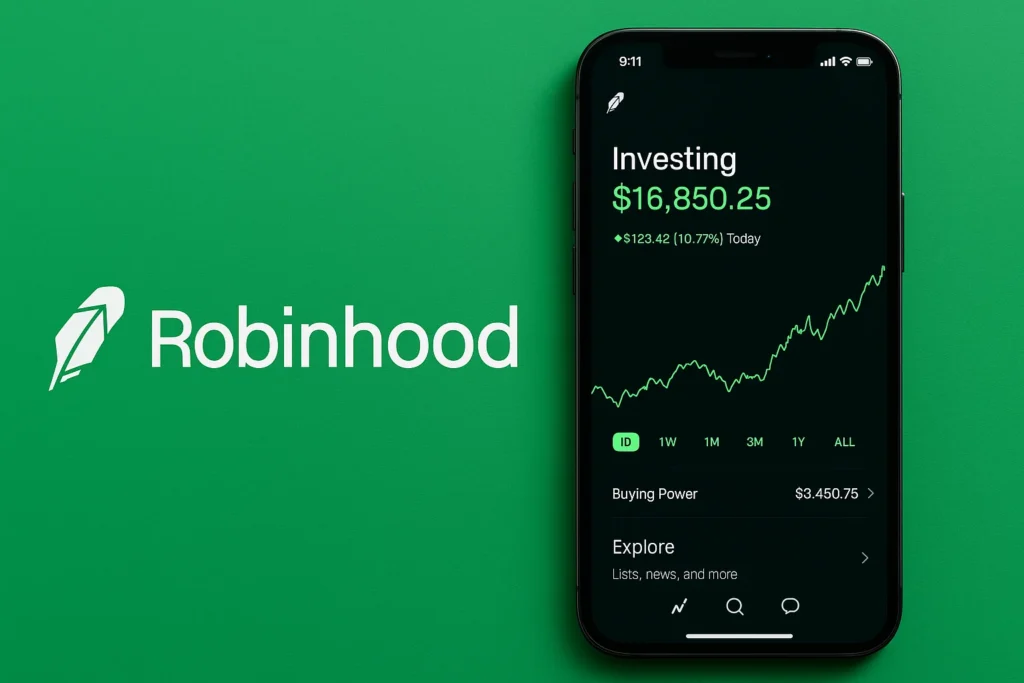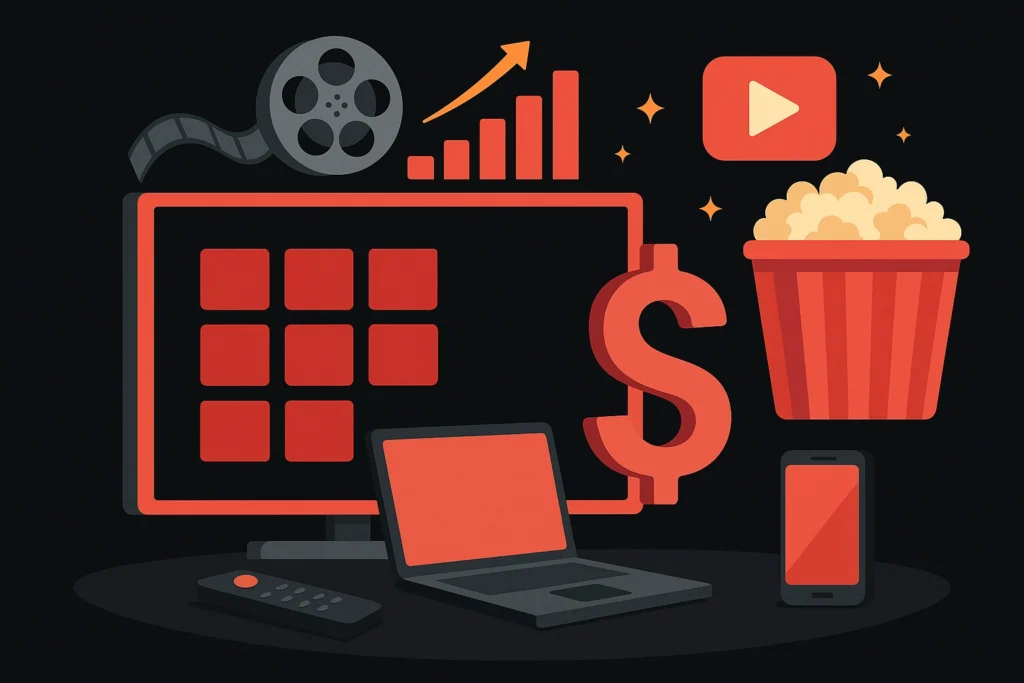Amazon Prime Video brought in over $14 billion in 2024, and its 2025 revenue is set to touch $17.5 billion. It’s now one of the most profitable streaming brands globally. For entrepreneurs exploring OTT and video streaming ventures, understanding how Prime Video earns is vital. Its hybrid model combining subscriptions, ads, and content licensing offers a blueprint for sustainable revenue growth — and that’s exactly what the Miracuves Prime Video Clone helps replicate with modern monetization flexibility.
Prime Video Revenue Overview – The Big Picture
Current Valuation & Revenue: Prime Video is a key pillar in Amazon’s $1.8 trillion valuation, contributing around $17 billion in 2025 to its entertainment segment.
Year-over-Year Growth: 2023 → $11.9 B, 2024 → $14.1 B, 2025 → $17.5 B (approx. 24 % YoY growth).
Regional Breakdown: North America accounts for 45 %, Europe 25 %, Asia 20 %, Others 10 %.
Profit Margins: Operating margin ranges from 22 – 28 %, improving with ad-supported plans.
Market Position: Globally, Prime Video ranks third behind Netflix and Disney+ but leads in subscription bundling through Amazon Prime membership.
Read More: Prime Video App: How It Works and Why It’s a Top Streaming Platform

Primary Revenue Streams – Deep Dive
| Revenue Stream | Description | Share of Total Revenue (2024) | Growth Trend |
|---|---|---|---|
| Subscription Plans | Monthly or annual Prime membership fees | 60 % | +18 % YoY |
| Ad-Supported Streaming | New Prime Video with Ads tier | 15 % | +45 % YoY |
| Movie Rentals & Purchases | Pay-per-view films and series | 10 % | +12 % YoY |
| Content Licensing & Distribution | Selling Amazon Originals to other platforms | 8 % | +20 % YoY |
| Add-on Channels & Partnerships | HBO, Paramount+, Lionsgate bundles | 7 % | +25 % YoY |
Subscription Revenue: Prime membership ($14.99/month or $139/year) includes video access. It’s the largest driver of recurring revenue.
Ad Revenue: Launched in early 2025, the ad-tier adds $2 – $3 billion in annual income from brand placements and pre-roll ads.
Movie Rentals: Average rental price is $3.99 – $5.99; purchase price ranges $14 – $24.99.
Add-on Channels: Amazon earns 15 – 30 % commission from third-party streaming partners.
Licensing: Select Amazon Originals are sold to regional broadcasters or streaming partners.
The Fee Structure Explained
| User Type | Fee Category | Details | Average Rate |
|---|---|---|---|
| Viewers | Prime Subscription | Monthly or annual membership | $14.99 / month |
| Advertisers | Ad Spots and Placements | CPM model pricing | $18 – $28 CPM |
| Movie Distributors | Licensing Fee | Regional content rights | Variable |
| Channel Partners | Revenue Share | Amazon commission on bundled channels | 15 – 30 % |
| Pay-Per-View Users | Rental or Buy Charges | One-time movie purchase/rental | $3.99 – $24.99 |
Prime Video balances subscription and transactional models while creating an ad-based layer for scalable profitability.
How Prime Video Maximizes Revenue Per User
- Bundling Strategy: Video access is part of Amazon Prime — increasing customer lifetime value across services.
- Dynamic Pricing: Region-specific pricing based on income levels and content availability.
- Cross-Selling: Integrating Amazon Shopping and Music into the Prime ecosystem.
- Upselling: Encouraging users to rent new releases beyond subscription content.
- Retention Monetization: Releasing weekly episodes and exclusive sports to maintain watch hours.
- AI Personalization: Optimizing ads and content recommendations to increase watch time and ARPU.
Average Revenue Per User (ARPU) rose from $12 in 2023 to $16.5 in 2025.
Cost Structure & Profit Margins
Key Costs: Content production, licensing, streaming infrastructure (AWS), marketing, and talent acquisition.
Unit Economics: Gross margin ~ 65 %, operating margin ~ 25 %.
Content Budget: Over $10 billion allocated in 2025 for original and exclusive titles.
Profitability Path: Higher ad load and sports licensing are driving margin expansion.
Read More: Best Prime Video Clone Script 2025 | Launch Your OTT Platform

Future Revenue Opportunities & Innovations
- Ad-Tier Expansion: More localized ads and programmatic targeting via Amazon Ads.
- Sports Broadcasting: Exclusive NFL and Cricket streaming rights boost subscription retention.
- AI Content Curation: Machine learning enhances recommendations and reduces churn.
- Partnerships: Integration with e-commerce for shoppable video experiences.
- International Markets: Heavy growth expected in India and Latin America.
- Threats: Competition from Netflix, Disney+, YouTube TV, and rising content costs.
Lessons for Entrepreneurs & Your Opportunity
Prime Video demonstrates how diversified monetization creates stability in a volatile media landscape. Combining subscriptions, ads, and partnerships builds recurring income and user retention.
Want to build a platform like Prime Video? Miracuves offers ready-made Prime Video Clone scripts with multi-revenue support — subscription, ads, rentals, and partner modules pre-integrated. Entrepreneurs can start earning within 30 days of launch using Miracuves’ proven OTT technology.
Final Thought
Prime Video turned streaming into a full-scale ecosystem by blending subscriptions, rentals, originals, and commerce into one smooth river of revenue. That model proves something powerful: platforms thrive when they think beyond content and build engines that earn in multiple ways. With Miracuves, you don’t just launch a streaming app — you step into that hybrid future with tech that’s already shaped for scale. It’s your shortcut to creating a platform that grows wide, earns deep, and competes with the giants from day one.
FAQs
1. How much does Prime Video make per subscription?
Approximately $14.99 per month or $139 annually per user.
2. What’s the most profitable revenue stream?
Subscription bundling and ads drive the highest margins.
3. How does Prime Video earn from third parties?
Through add-on channels and licensing commissions (15 – 30 %).
4. What’s the average advertising rate?
Around $18 – $28 per thousand impressions (CPM).
5. Has Prime Video added ads in 2025?
Yes, an ad-supported tier was rolled out globally to increase revenue.
6. Can small OTT apps replicate this model?
Absolutely — Miracuves’ Prime Video Clone includes ad and subscription modules.
7. What’s the minimum scale for profitability?
Apps with as few as 10 000 subscribers can become cash-positive within months.
8. How to implement similar revenue systems?
Combine ads, subscriptions, and in-app rentals like Prime Video via Miracuves’ ready framework.
9. What’s the average ARPU for 2025?
About $16.5 per user globally.
10. How fast can entrepreneurs monetize with a clone?
With Miracuves’ ready-launch OTT solution, you can go live and start earning in just 3–6 days with guaranteed delivery, ensuring a rapid and revenue-ready launch.







